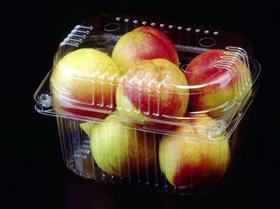
As work to reduce plastics in South Africa’s deciduous fruit industry continues, one leading exporter has said it is making progress in supporting one of its leading international receivers, Tesco, with cutting plastic in packaging.
Tru-Cape Fruit Marketing has said that it is collaborating with Tesco’s South African Hub to look at ways of reducing the use of plastics in packaging.
This, according to Tru-Cape’s quality manager, Amanda Fisher, included a packaging audit.
“Tru-Cape looked at the number of protective bubble sheets used in each carton, the microns of liner bags used to package loose fruit, reducing the film size of the packs to reduce unnecessary plastic usage and alternatives to the liner bags used for loose packaging,' Fisher explained.
This is an example of the industry-wide work being done on plastic use, and new ways to limit it in South Africa.
Professor Wiaan Steyn, assistant manager of Hortgro Science, has said there will be further work this year in both the topfruit and stonefruit industries.
The main problem that needs solving is ensuring that, during transit, fruit does not perspire, which results in loss of quality. Plastics have been used in various ways to ensure an ideal shipping environment.
Steyn outlined that trials on the effects of edible coatings on respiration have been carried out on plums for some time. This year, trials will continue on plums and a special project on apples will also be introduced.
“We will divide our apple cultivars in three groups, those that can possibly be shipped without use of plastic bags, those which need some use of plastics and those that absolutely need the bags to remain in optimum condition,' Steyn said. 'For the last group and also the middle group, we will see is we can introduce edible coatings.”
Acknowledging that requirements from retailers and receivers often differ, and that exporters have to comply with these requirements, Steyn said that the ongoing research was destined to help exporters in making crucial decisions.
One of the areas in which the plastic footprint can be reduced is in the bubble sheet being used for protecting fruit from bruising.
“The challenge was to remove the protective bubble sheet, without an increase in injury when our product arrived in the UK after a three to four-week shipping period,' Fisher explained. “Tru-Cape had to do several trials and investigated whether it was possible to pack fruit in cartons with minimal protective bubble sheets to protect the fruit. The results indicated that we could lower our protective bubble sheet usage without increasing the bruising on the fruit.”
Based on this information, Tru-Cape has during the past year reduced the use of protective bubble sheets by half, Fisher said, and on some varieties the sheet had been eliminated altogether.
“This has resulted in a dramatic decrease in plastics used,' she confirmed. 'We have been able to reduce our plastic consumption by 61.25 per cent, going from 10,649.15kg of protective bubble sheet to 4,126.65kg, without jeopardising the final quality of the fruit.”
Johan Strydom, specialist in fresh fruit supply chains, previously said that before the 1970s fruit were packed and transported without using a single bit of plastic.
Other observers have said that since then, one new component after another had been introduced to find a plastic solution to maintaining fruit quality. Now sentiment and world opinion is changing, hence comprehensive efforts in the South African industry to reduce its use.



